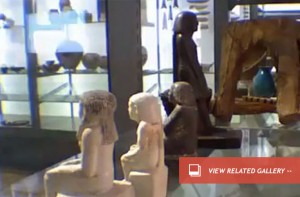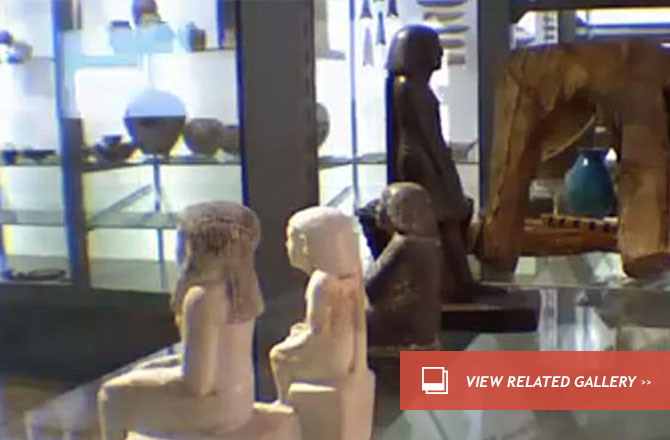
An ancient statue in a British museum was caught on camera mysteriously turning in its locked display case in June. The footage mystified many and made international news. According to an article in the “Manchester Evening News:”
BLOG: Mysterious Mummy Statue Spins on Its Own
• ”Maybe the statue has a material component that reacts to the rotation of the earth.”
• ”Perhaps there is magnetism that eventually turns it to face north or south? Pulled based upon the position of the sun/moon?”
• ”Magnetics are a possibility — some rocks have crystalline structures which can store charge.”
• ”It seems to only be turning while exposed to sunlight. It doesn’t move at all when it’s dark.”
• ”It’s releasing some kind of gas and being on glass it’s enough to let it rotate.”
• ”It seems to turn at a uniform rate whenever the lights are on. Could the transformer for the lights be causing a vibration at just the right frequency?”
• ”The sacred geometry of a pyramid creates a natural swirling vortex of energy that beams out of the top…. Perhaps this statue is emanating the same energy that pyramids do. If it’s sitting on a very clean, polished surface, it’s possible that energy is just enough to spin in it around slowly.”
PHOTOS: Tut’s Funeral: Burying the Boy King
For each explanation — notably including the one that turned out to be correct — counter-arguments and counter-evidence was offered. Earlier this week, a scientist finally found the definitive explanation. As a BBC News report explained:
This investigation, done on behalf of a myth-busting British television show, confirmed what many scientists had long suspected. In fact that exact explanation appeared six months ago in a Discovery News analysis of this mystery shortly after it happened:
Now that the mystery has been definitively debunked, some are reacting with dismissals such as “So what? It was obvious,” or “Anyone could have figured it out.”
However as with many mysteries, the real value in investigation and research is in separating the truths from the myths, the valid theories from the invalid speculation. After a scientist or investigator has put in the time and effort into conclusively solving a mystery, it’s easy for armchair skeptics — and believers — to talk about how simple the solution turned out to be.

